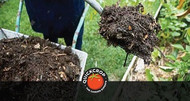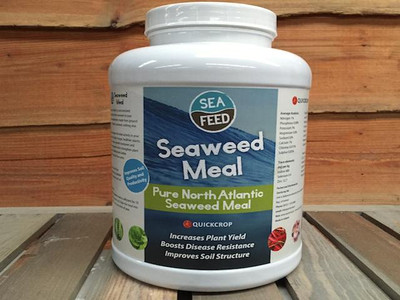Sustainable Gardening
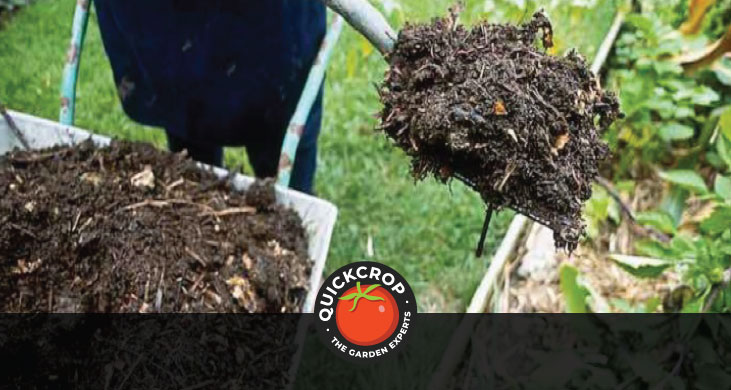
You've probably seen the word 'sustainable' a fair bit, but we wouldn't blame you if you're not entirely sure what it means. With the way it's used, it can sometimes seem like another word for ‘eco-friendly’, ‘environmentally friendly’, ‘conscious’ or ‘organic’. If we were to put on our cynical hat, it can also often seem like a vague, meaningless buzzword used to try to market you products (not guilty, honest!).
Sustainability is essentially about the ability of humans and the natural world around us to co-exist and survive in the long-term. An oft-quoted definition is that it’s about meeting the needs of the present generation without compromising the ability of future generations to meet their needs.
Of course, humans are doing a pretty lousy job of that, which is why more and more emphasis is being put on the need for sustainability: sustainable agriculture, sustainable development, and yes - sustainable gardening.

The 3 Pillars of Sustainability
Sustainability can be visualised as having three pillars: economic, environmental and social.
- The environmental aspect tends to be focused on, and understandably so: if the world isn’t habitable anymore then everything else is going to be pretty moot. But it’s worth teasing out the other two aspects a bit.
- In a social sense, a business might be referred to as being sustainable if it’s giving back to the community it operates in. For example, a local business might invest in community development projects, or invest in the well-being of their workers, offering mental health support. Ethical fair trade-aligned companies aiming to ensure that workers are paid fairly is another example of the social pillar in action.
- Whether their intentions are good or not, people will often dismiss environmental and social justice concerns by pointing out the importance of the economy. Sustainability acknowledges this importance, but focuses on ensuring long-term economic viability that is nonetheless interconnected with social and environmental awareness.
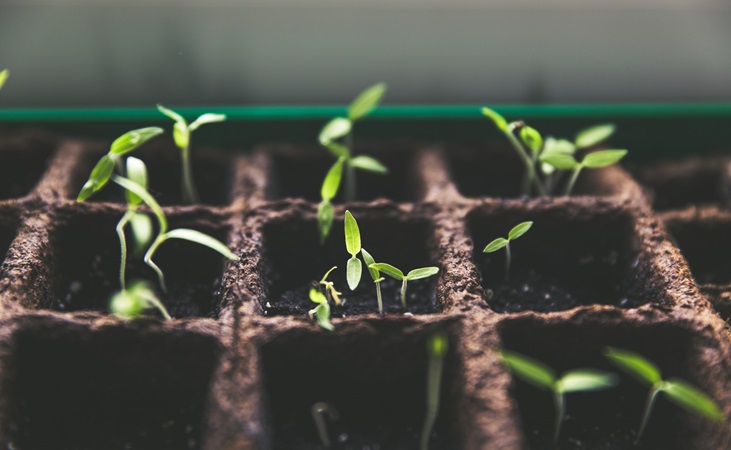
What is Sustainable Gardening?
To bring it back to gardening (which we probably should do at this point), you can think of the economy as your vegetable yield or harvest, the reward for all of your efforts in the garden. Being a conscious, environmentally friendly gardener won’t seem very appealing if we end up with a very poor yield. In fact it might make us think ‘to hell with being eco-friendly!’
So we need to find a way where we can be conscious of the environment and biodiversity while also having a productive garden. Doing so will involve challenges and compromises, but we can sleep easy at night knowing that we're doing our part.
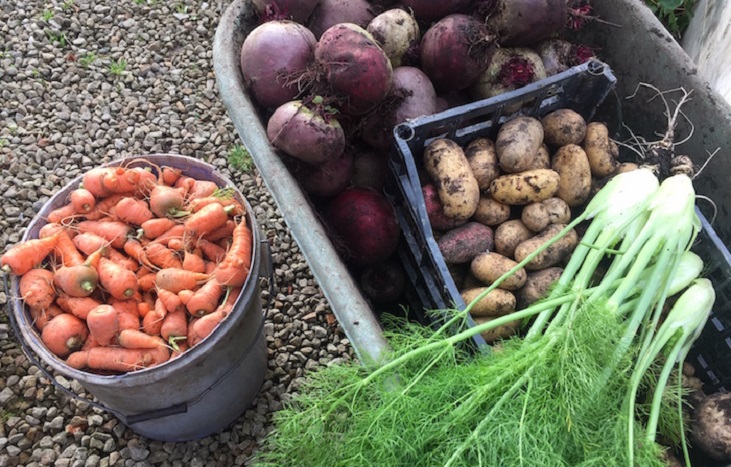
The act of growing your own food in itself is something of a sustainable action: it encourages a shift towards a more plant-based diet, while reducing the carbon footprint made by transporting fruit and vegetables long distances. But there are still a lot of areas that we can look at in our garden when it comes to being more sustainable and conscious of our own individual ‘footprint’.
Organic Gardening
Organic gardening and sustainable gardening often go hand in hand. Both prioritise conserving resources and being aware of the wider well-being of our ecosystem. So organic gardening practices are very often sustainable in nature, with a lot of overlap in methods.
Related Article: Organic Gardening
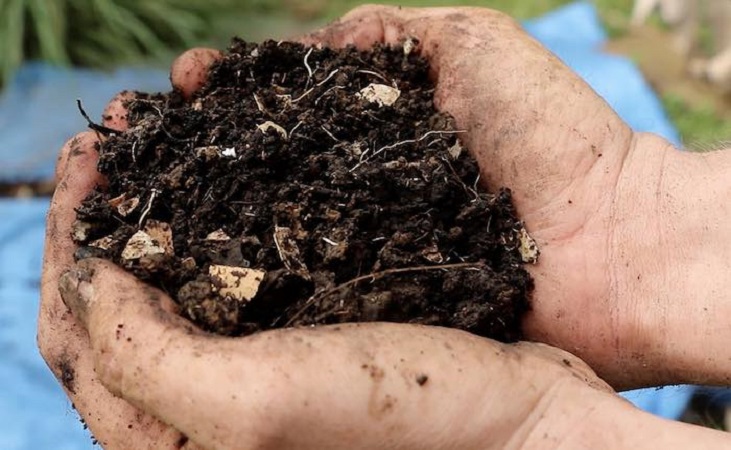
Sustainable Gardening Tips
1 - Compost
Producing your own homegrown compost reduces the amount of organic waste being sent to landfill: landfill waste is responsible for roughly 11% of global methane emissions, and is a big driver of climate change. Composting is a circular process where we take organic material that could be viewed as disposable and turn it into a valuable resource for the garden, reducing our reliance on external inputs such as synthetic fertilisers. It’s also something that can’t help but make us reflect on how much waste we create in other areas of consumption, such as excessive plastic packaging.
As for compost’s benefits for the garden, they are of course numerous. A well-balanced homemade compost makes for a nutritious soil amendment that replenishes the soil in a natural way, with broken-down organic matter. It improves soil structure and aeration, aiding its ability to retain moisture.
It also adds to the rich array of beneficial microorganisms within the soil. While compost is frequently added to the soil as a long-term measure, it can also be used as a periodic mulch throughout the growing season, keeping in moisture and suppressing weeds.
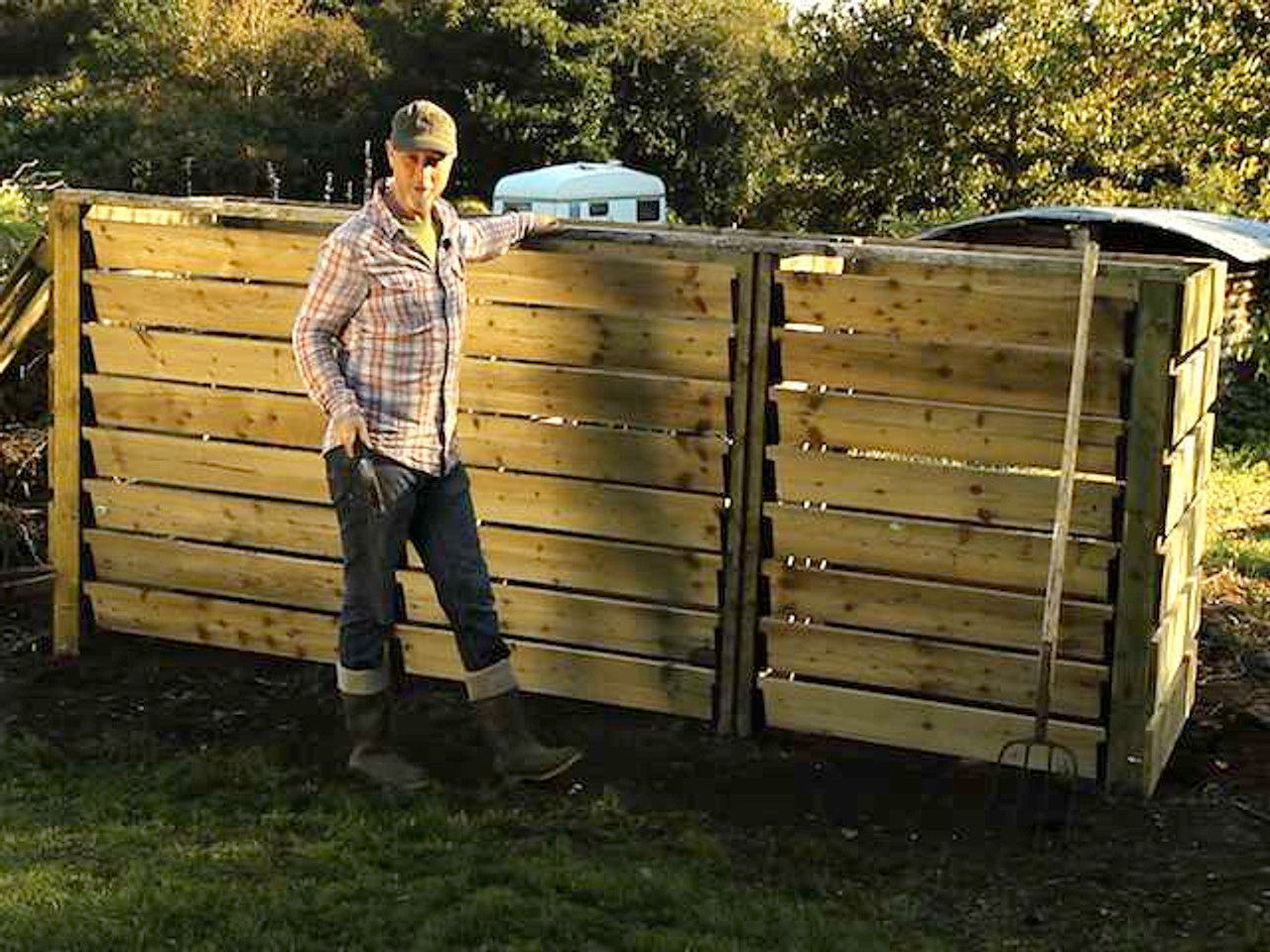
Treble Bay Easy Access Timber Composter
View Product2 - Biodiversity
Our planet’s biodiversity has been in an alarming decline for some time now. Put simply, biodiversity refers to the variety of life on earth, from insects to wildlife to birds to microorganisms. One notable example is the worrying decline of bees and pollinators, brought about by habitat loss, pesticide usage and other harmful practices.
We can all do our bit to foster a healthy, diverse ecosystem, and the garden is a great place to start. Planting a diverse array of plants will offer a range of habitats and food sources for beneficial insects such as ladybirds, lacewings and solitary bees. Many of these garden visitors will return the favour by keeping your garden ecosystem in balance, acting as a form of natural ‘pest’ control by keeping the more destructive garden foragers in check.
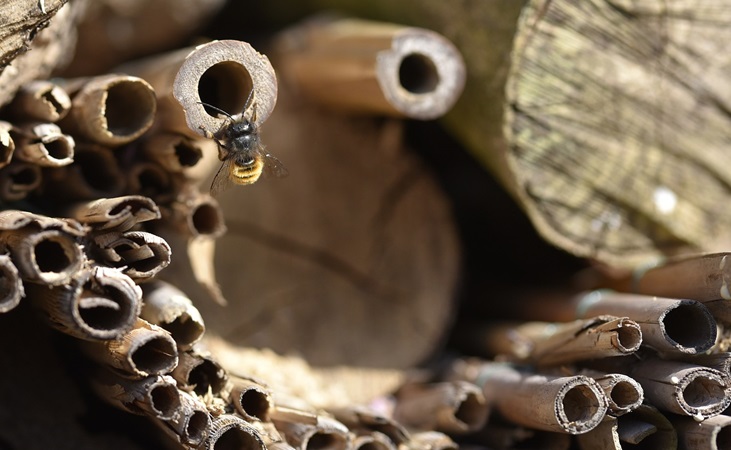
Related Article: How to Attract Beneficial Insects to Your Garden
Make room in your garden for flowers, shrubs or perennial plants as well as edible crops. Plants with different blooming periods can provide nectar sources and pollen as well as colour throughout the year.
Water sources like bird baths or butterfly ponds are another thoughtful addition, while bird feeders will help our feathered friends, especially when the temperatures drop and their food sources are more scarce.
Allowing certain areas of your garden or outdoor space to be a bit ‘wilder’ and unkempt can benefit biodiversity by providing nesting sites or shelter for overwintering insects. It can be something as simple as a pile of rocks, a stack of logs or a leaf pile - or if you’d like to get more elaborate you can set up an insect hotel made from material such as bamboo or pine cones.

Schwegler 2GR Nest Box - 3 x27mm hole
View Product3 - Pest Control
Chemical pest control might supply you with a very effective control method when your crops are being ravaged by a garden infestation. However, pesticides are a blunt instrument that does not discriminate between ‘good’ and ‘bad’ insects. They do a lot of harm, not just to the species that you’re targeting, but also to wildlife, birds, and the wider ecosystem.
Some studies have found clear links between pesticide usage and lower bee populations, for example. Pollinating insects are exposed to these chemicals as they feed on pollen and nectar from the treated plants. It’s clear that we need to use less destructive forms of control if we care about sustainability and biodiversity.
Sustainable gardening prioritises prevention over a quick cure. Indeed, a truly sustainable way of thinking about pest control might involve no longer thinking of these garden inhabitants as ‘pests’: they’re just living their lives and looking for food, after all. They have no beef with us!
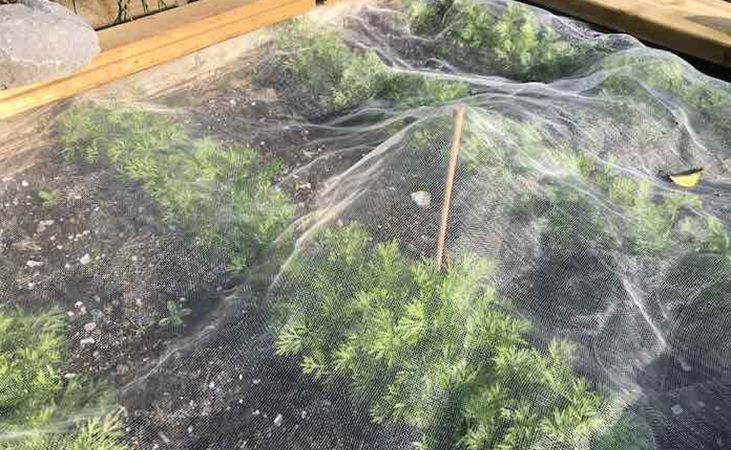
Non-toxic forms of pest control can, admittedly, be hit and miss sometimes in comparison to chemical methods. That’s the trade-off though, and it’s one that’s worth making. Garden alternatives to pesticides include:
- Beneficial Insects: You can seek to attract beneficial insects such as hoverflies, ladybirds and ground beetles to your garden. This can be done with certain plant varieties (e.g. fennel for lacewings or Sweet Alison for hoverflies). Alternatively you can attract them by leaving dry, undisturbed habitat areas in your garden over the winter. Ladybirds will feed voraciously on thrips, whiteflies and aphids.
- As a more immediate solution, you can purchase biological controls: this is essentially where you buy yourself a squadron of beneficial nematodes (microscopic worms) or ladybirds who then go to work in dealing with a developing infestation. Nematodes can even tackle the problem underground; indeed a healthy, nutritious soil should already have a resident population. A concentrated dose of beneficial nematodes can control white grubs, thrips, vine weevils or (in the case of certain options) slugs. Source them relatively local if you can; invasive nematode usage can be a problem.
- Physical barriers such as mesh or micro-mesh netting, horticultural fleece, row covers, cloches or copper tape.
- Strategic planting: You can get strategic by planting certain crops at certain times. Fast-maturing pea varieties sown in March will stand a better chance of cropping before the pea moth lays her eggs. Early potato varieties have more chance of avoiding potato blight, while you can also opt for the more blight-resistant varieties (This is preferable to using a fungicide).
- Sacrificial crops: growing 'trap crops' or ornamentals to keep potential pests away from your prized crops. Nasturtiums or marigolds can be planted as a distraction plant for aphids or spider mites etc.

Micromesh Bulk Roll 1.8m
View Product4 - Plant Feed
A very important aspect of sustainable or organic gardening is avoiding the use of synthetic fertilisers. These products are often used because of the speedy short-term boost that they give plants and fruit crops. However, this quick fix is a double-edged sword:
- The chemicals used in these products can harm waterways as they seep down through the soil and runoff into streams or lakes.
- Relying on synthetic fertilisers can progressively deplete the soil: although they are good at correcting a shortfall of ‘NPK’ (nitrogen, phosphorus and potassium) they are lacking in a range of micronutrients that foster overall soil health. In turn this can cause nutrient imbalances and a decline in beneficial microbial activity. This can create a vicious cycle of dependency on inorganic products that is pretty much the opposite of sustainability.
- Synthetic fertilisers are commonly made using fossil fuels or finite resources such as rock phosphate. The production of these fertilisers can require a lot of energy usage and inputs.
Organic alternatives to fertiliser - such as compost or broken-down animal manure - foster long-term soil health, enhance soil structure and enrich your vegetable beds with a balanced, slow-release supply of nutrients. For quicker fixes, there are organic and non-synthetic plant feed alternatives:
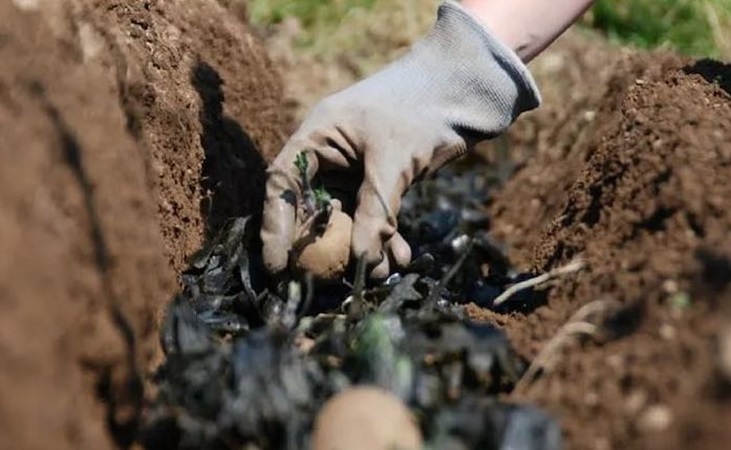
Seaweed: Long used as a soil improver in coastal regions, seaweed contains healthy amounts of potassium, nitrogen, phosphorus and magnesium - in other words the same nutrients that synthetic fertilisers offer, but with the added benefit of a range of trace elements such as zinc and manganese.
When responsibly cultivated, seaweed is a sustainable resource; indeed it’s been touted as being one of the planet’s most untapped resources with the potential ability to play a key role in ‘regenerative agriculture’. It can sequester large amounts of carbon, while seaweed farms provide habitat for various marine species.
Our ‘Seafeed’ range includes:
- Seaweed Meal Soil and Plant Feed, made from sustainably harvested seaweed that has been dried and ground;
- Seaweed Extract & Poultry Manure Fertiliser, which combines free range chicken manure (an excellent source of nitrogen), seaweed and humic acid to create a natural slow-release pellet fertiliser.

Seafeed Organic Seaweed Meal Soil and Plant Feed
View ProductComfrey plant feed is a nutritious alternative derived from natural sources - namely the comfrey plant, which is something of a secret weapon for gardeners. In the UK it can be found growing wild along river banks or on roadside verges. Comfrey’s deep roots are able to access nutrients from deep in the soil and store them in their leaves.
It’s high in potassium, which makes a comfrey extract or feed very suitable for crops like tomatoes, strawberries and squash. It also has healthy levels of nitrogen, phosphorus and calcium.
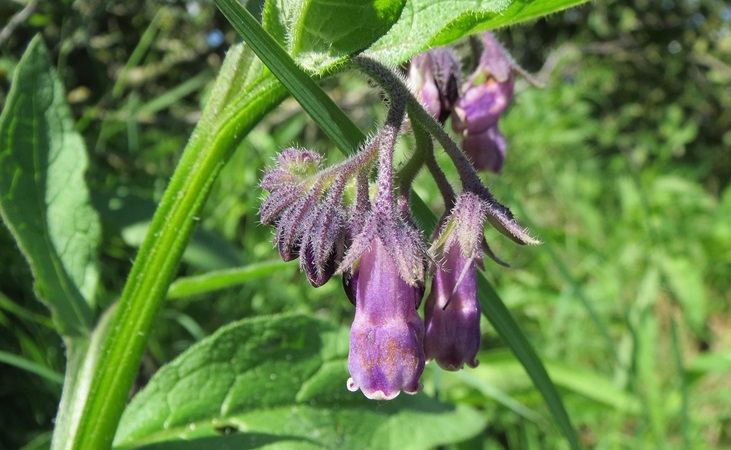
Comfrey feed can be made at home if you harvest the leaves and steep or soak them; this process can take about 3-4 weeks. You can also purchase comfrey fertilisers or liquid feeds. The Comfrey Tonic we supply comes in a concentrated form; it’s a rich source of micronutrients, vitamins and minerals. One side benefit is that you won’t be subjected to the almighty smell that can result from creating your own homemade mixture!

Comfrey Pellets 1 & 3litre box
View Product5 - Rainwater Harvesting
Water conservation is sure to be a pressing issue in the coming years, as we face the increasing likelihood of hotter summers, more extreme temperatures and longer periods of drought. 2022 was said to be the worst year for droughts in Europe in 500 years! One thing that tends to go hand-in-hand with droughts is the dreaded hosepipe ban. So as gardeners or home-growers it serves us well to be prepared for water shortages when they hit.
Storing rainwater for use in the garden is a step towards greater sustainability and self-sufficiency. Collecting rainwater can be as simple as placing a barrel out or as elaborate as a house-wide rainwater catchment system. However, an increasingly popular option is the water butt, which is a container or tank that is usually connected to the drain or downpipe of a roof. It will then reliably collect water runoff any time that it rains. It’s truly surprising just how much rainwater you can harvest using this method: in a typical year you’re talking about thousands of litres at least, with that number rising rising considerably in wetter areas.

Barrica Rain Water Barrel
View ProductRainwater harvesting will have direct benefits for your garden as well. After all, plants always seem to look happier and healthier after a quick shower. Rainwater has a slightly acidic make-up that’s right in the sweet spot for plant growth and nutrient uptake. It also lacks the excessive mineral build-up (eg chlorine) that sometimes comes along with using tap water.
6 - Irrigation
Efficient irrigation methods like drip irrigation or soaker hoses can reduce the amount of water that goes to waste due to evaporation or overwatering. Drip irrigation delivers a steady supply of water directly to the area around plant roots. This involves a system of pipes with emitters or drippers placed near the root zone. Because the water seeps into the soil, there will be less evaporation than if you were irrigating plant foliage from above.

Drip Irrigation System - 16mm Parts Picker
View ProductThis supply can be regulated and optimised using timers, so that plants are only watered when necessary. Drip irrigation systems are suitable for use in the garden, the polytunnel or raised beds. They are deceptively easy to set up, and aside from the water conservation benefits they make life a whole lot easier in the garden, freeing you up to take care of other things.
Soaker hoses follow pretty similar principles. These are porous pipes with tiny holes or perforations which allow water to seep out slowly and steadily. In contrast to drip irrigation emitters, the water will seep out along the entire length of pipe.
Soaker hoses are laid on the surface of the soil or slightly buried, and often covered with a shallow layer of mulch to further safeguard against evaporation. The soil can absorb this water at its own pace, which reduces runoff and encourages deep root growth. Soaker hoses are best used along with a timer to prevent overwatering.
Other methods like mulching of the soil or no-till gardening can enhance your soil’s ability to hold moisture. It’s generally better for plants that they get used to seeking out moisture in the root zone rather than relying on us for a helping hand, so it’s not just about conservation for conservation’s sake.
7 - Recycling and Adapting Materials
There are all kinds of creative ways that you can re-use items and adapt them to garden purposes. This reduces waste and items ending up in landfill, while also saving you money.
- Old pallets can be used as vertical planters
- Bathtubs can be transformed into raised beds
- Discarded window frames or bicycle wheels can be used as trellises or plant supports
- Old newspapers and cardboard packaging can be used as mulch material
- Egg cartons and yoghurt cups can be used as containers for starting seeds
